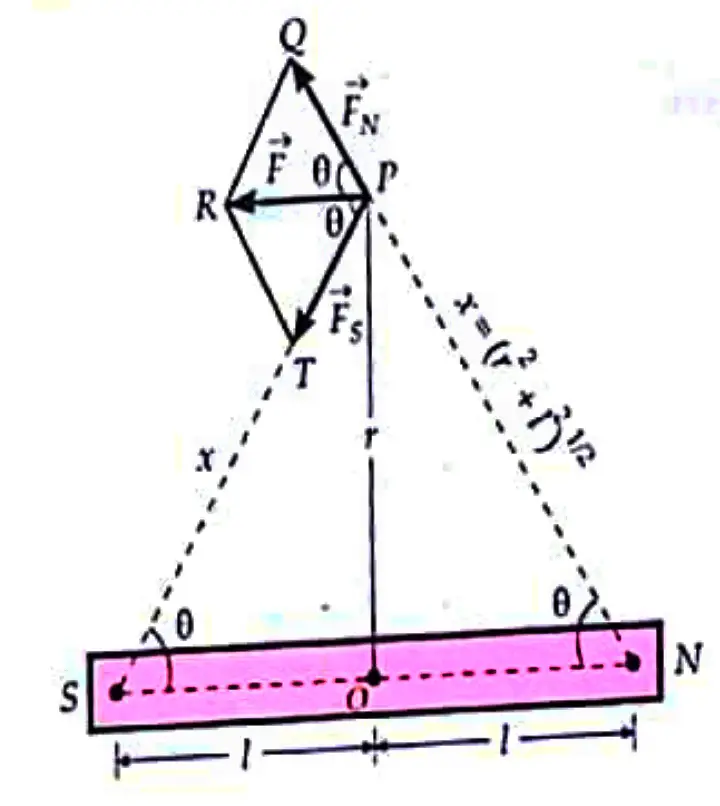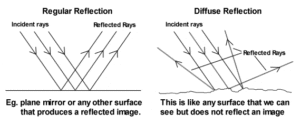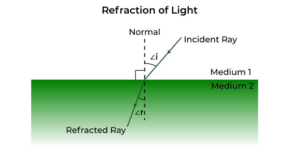In this article, we will derive an expression for magnetic field at a point on the equatorial line of a bar magnet, so let’s get started…
Derivation of the magnetic field at a point on the equatorial line of a bar magnet
[latexpage]Consider a bar magnet NS of length $2l$ and the pole strength of $q_m$. Suppose the magnetic field, we wish to find at the point P, lies on the equatorial line of the bar magnet at the distance $r$ from the geometric centre of the magnet. See figure below:

Lets imagine a unit north pole placed at the point P. Then from the coulomb’s law of magnetic force, force exerted by the North pole of the bar magnet to the unit north pole placed at the point P is given as: $$F_N=\frac{\mu_0}{4\pi}\cdot\frac{q_m}{x^2},\quad\:\text{along}\:NP$$ Similarly, the force exerted by the south pole of the magnet to the unit North pole placed at the point P is- $$F_S=\frac{\mu_0}{4\pi}\cdot\frac{q_m}{x^2},\quad\:\text{along}\:PS$$
As the magnitude of $F_N$ and $F_S$ are equal, so their vertical components get cancelled while the horizontal components add up along PR. Hence, the magnetic field at the equatorial point P is $B_{equa}$ equal to net force experienced by the unit North pole placed at point P.
$$B_{equa}=F_{N}cos\theta+F_{S}cos\theta$$ $$=2F_{N}cos\theta\qquad [\therefore\:F_N=F_S]$$ $$=2\cdot\frac{\mu_0}{4\pi}\cdot\frac{q_m}{x^2}\cdot\frac{l}{x},\qquad \left[\therefore\:\cos\theta=\frac{l}{x}\right]$$
Using Pythagoras theorem, the value of x can be given as $x=(r^2+l^2)^{\frac{1}{2}}$. So after putting the value of x in above expression, we get- $$\boxed{B_{equa}=\frac{\mu_0}{4\pi}\cdot\frac{M}{(r^2+l^2)^{\frac{3}{2}}}}$$ where, $M=q_{m}\cdot 2l$, is the magnetic dipole moment of the bar magnet.
For a short bar magnet, for which $l<<<r$, above expression can be reduced as follows: $$\boxed{B_{equa}=\frac{\mu_0}{4\pi}\cdot\frac{M}{r^3}},\quad\:\text{along}\: PR$$
It can be clearly seen that the direction of magnetic field at any equatorial point of a magnetic dipole (here bar magnet) is opposite to the direction of magnetic dipole moment,i.e N-pole to S-pole. So the expression of magnetic field at the point on the equatorial line is given as below: $$\boxed{B_{equa}=-\frac{\mu_0}{4\pi}\cdot\frac{\vec{M}}{r^3}}$$
On comparing magnetic field at axial point to the magnetic field at the equatorial point, we find that- $$\frac{B_{axial}}{B_{equa}}=\frac{\frac{\mu_0}{4\pi}\cdot\frac{2M}{r^3}}{\frac{\mu_0}{4\pi}\cdot\frac{M}{r^3}}=\frac{2}{1}$$ So from this we can say that magnetic field at axial point due to a magnetic dipole at a certain distance is twice the magnetic field due to magnetic dipole at equatorial point for same distance.
Stay tuned with Laws Of Nature for more useful and interesting content.








